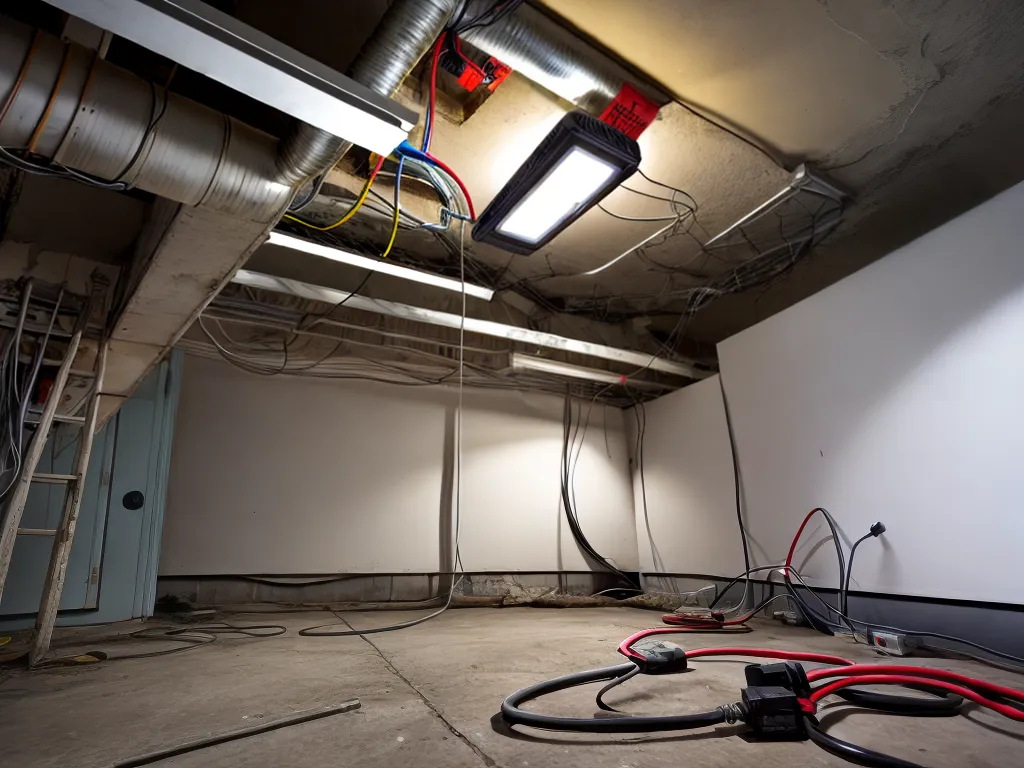
Introduction
Power surges can cause major problems in older commercial buildings. As the owner or facilities manager, it's important to understand why surges occur and how to troubleshoot issues when they arise. In this guide, I'll provide an in-depth look at identifying, diagnosing, and resolving power surge problems in aging business properties.
What Causes Power Surges?
There are several potential causes of power surges in commercial spaces:
Weather Events
Storms like lightning strikes and high winds can cause surges by damaging lines and disrupting service. Nearby strikes send energy through the ground that can overload circuits. These weather surges tend to be more common in older buildings with vulnerable wiring.
Grid Equipment Failure
Problems with transformers, substations, and power lines can also create voltage spikes. If a transformer fails or a power line is damaged, it can impact the steadiness of electricity to your building. Older commercial properties may rely more on aging grid infrastructure.
On-Site Electrical Issues
Faulty breakers, wiring problems, inadequate grounding, and poor quality extension cords and power strips can cause surges within your building itself. Outdated electrical systems in old commercial spaces often contribute to these kinds of internal surges.
Heavy Load Equipment
Large motors, HVAC systems, industrial machinery, and appliances with high startup power draw can create dips and swells in voltage as they switch on and off. The antiquated electrical systems of older buildings make them prone to surges from cycling heavy equipment.
Potential Surge Damage
Power surges can damage and destroy sensitive electronic equipment and appliances. Some common issues include:
-
Fried circuit boards - Voltage spikes can overload and fry delicate circuits and chips in computers, smart devices, TVs, audio equipment, security systems, etc. This can lead to complete failure.
-
Burned-out motors - The motors in devices like fans, pumps, compressors, and production machinery can burn out due to power surges. Replacement may be required.
-
Melted insulation - Power swells create excess current flow that generates heat and can melt the insulation around wires, breakers, and equipment windings. This can lead to arcing and shorts.
-
Data and hardware corruption - Surges can corrupt software, firmware, and stored data on computers and corrupt hardware programming. This can cause glitches, crashes, and loss of settings.
-
Premature bulb failure - Spikes heat and over-voltage bulbs, shortening their lifespan. You may see frequent lighting bulb burnouts after surges.
Signs of Power Surges
Be on the lookout for these common indicators of power surge issues:
- Frequent tripped breakers or blown fuses when large appliances turn on
- Flickering or dimming lights when heavy load equipment starts
- Computer crashes and hardware/software glitches
- Alarm errors and malfunctions in security and fire systems
- Unusual motor noises or failure in HVAC and pumps
- Melted plugs or smoking outlets
- Bulb burnouts in lighting fixtures
- Capacitor leaks in appliances and equipment
Testing for Surges
To help diagnose surge issues, consider using:
-
Multimeter - A digital multimeter can detect abnormal voltage levels at outlets during suspected surges. Look for voltages over 130V or under 110V to indicate problems.
-
Surge detector - Plug-in surge detectors have LED indicators that light up when abnormal voltage is present. They can confirm surges during suspected events.
-
Advanced metering - Installing a metering system to monitor power quality over time can provide data and diagnostics for surges, spikes, harmonics, etc.
Troubleshooting the Source
Once surges are confirmed, systematic troubleshooting helps identify the root cause:
-
Check weather data to see if surges correlate with lightning storms or high wind events. This points to grid/weather sources.
-
Inspect the breaker panel for any corrosion, failed breakers, or signs of excess heat. Faulty breakers can cause power surges.
-
Examine electrical wiring throughout the building for damaged insulation, exposed copper, splices, etc. Damaged wiring often contributes to surges.
-
Test grounding rods/wires with earth ground resistance tester. Improper grounding can lead to internally generated surges.
-
Listen to motors, transformers, and heavy load systems during startup cycles. Irregular sounds can indicate equipment issues.
-
Meticulously log all surge events, affected equipment, and circumstances to match patterns and zero in on root causes.
Preventing Future Surges
Once the source is found, solutions can be implemented:
-
Install surge suppressors at the main panel to protect downstream equipment. Commercial-grade suppressors help regulate voltage.
-
Replace any faulty breakers or wiring identified during troubleshooting. Only use properly rated components.
-
Upgrade grounding if resistance tests show inadequate earth grounding present. Proper grounding helps shunt surges.
-
Consider power conditioning systems that isolate clean power from grid fluctuations for sensitive electronics. Online or standby UPS offers protection.
-
For internally generated surges, replace problematic motors or modify starting cycles to prevent large inrush currents.
-
Install lightning rods and proper surge protection devices on power, phone, networking, and data lines entering building.
When to Call an Electrician
If surges persist after troubleshooting, it's wise to call in a qualified electrician or power quality specialist. They can do advanced diagnostics like:
-
Harmonic analysis - Checks for harmonics that can cause distortion and equipment overheating.
-
Power quality metering - Charts electrical data like spikes, sags, and total harmonic distortion (THD) to pinpoint problems.
-
Load monitoring - Identify excessive loads that stress electrical systems.
-
Thermal imaging - Scans for "hot spots" like high resistance connections that degrade power quality.
-
Transient voltage surge suppression (TVSS) - Implements best solution for your surge type based on data.
Professional assessment is recommended for persistent surges or any situation exceeding your electrical expertise. Targeted solutions can then be applied.
Summary
Power surges in aging commercial buildings can be tricky to resolve. Careful troubleshooting matched with preventive electrical upgrades offer the best protection. When in doubt, don't hesitate to enlist the help of a qualified electrician. Following these best practices will help minimize disruptive surge damage and keep your older property's electrical systems running smoothly.